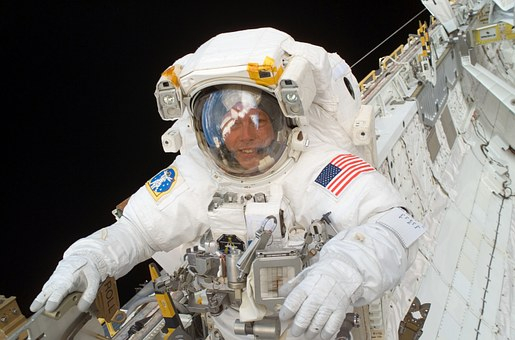
Do NASA astronauts in space show cognitive performance in sync with structural changes in their brains? How the human brain adapts in space or in a sheltered atmosphere of "microgravity" is being explored by neuroradiologist Donna R. Roberts of the Department of Radiology and Radiological Science at the Medical University of South Carolina. After an earlier study, she had reported that the astronaut's brain would shift upward, with tissue crowding up at the top and the ventricular system expanding, following fairly long missions on the International Space Station (ISS).
In a new study, Roberts and her colleagues reviewed brain magnetic resonance (MR) imaging scans of NASA astronauts. They noticed a lot of structural changes in the brain, especially following long spaceflight missions. The changes kept in pace with alterations in motor skills and cognitive performance of astronauts. The American Journal of Neuroradiology published Roberts' paper, "Prolonged Microgravity Affects Human Brain Structure and Function," online in October.
"This study looks at cognitive changes in the brains of astronauts," said Roberts. "Not a lot is known about cognitive impairment in humans during spaceflight. Although this study evaluates a small subset of astronauts, it's significantly larger than any previously published study of its kind involving astronauts or Russian cosmonauts."
Information from the NASA Lifetime Surveillance of Astronaut Health (LSAH) programme was collected and compared to the pre- and post-spaceflight brain MR imaging of 19 NASA astronauts. Seven of these completed short-duration flights aboard the Space Shuttle. Another 12 astronauts went through long-duration missions in the ISS.
The research team assessed the pre- and post-spaceflight cognitive tests results of the 12 long-duration astronauts. They matched the data with what they found in the brain structure imaging. They used the Spaceflight Cognitive Assessment Tool for Windows (WinSCAT) battery test, a screening tool developed by NASA to gauge memory, computational skills, attention, visual tracking and spatial processing.
"The long-term effects of these brain changes are unknown at this time because of the need for more detailed brain imaging of our astronauts. With that data we can begin to answer some important questions -- Does the brain return to its pre-flight baseline? Are there any long-term consequences of the brain's structural and performance changes in microgravity?" Roberts said.
A number of analytical techniques enabled the scientists to evaluate brain MR imaging change data and cognitive and motor function scores. The scientists compared changes in the structure of the brain with the age of the astronaut during the launch as well as its duration. However, there is not enough data on how the brain adapts to microgravity, so Roberts advocates more research, noting that her study might have a lot of significance in health, which should be examined when policy-making and planning are undertaken.
"These are issues that won't go away," she continued. "We need to take the initiative to really understand what's happening now by studying the data and conducting the right tests. I think it will always be NASA's priority to focus on the astronauts and their safety. At some point all of us will need to understand this information to move forward."









